
“Indulge in Paris’ Finest: Top Restaurants for Wine Lovers
July 12, 2013
Experience Paris' finest dining for wine lovers. Explore captivating flavors and ambiance in our top restaurant picks. Bon appétit!
By: Barnaby Eales / Last updated: May 2, 2025
Pairing fresh seasonal local dishes with local wine is a key starting point to enjoying the pleasures of French gastronomy. This culture has inspired and shaped eating and drinking habits worldwide. In a search for a symbiosis between wines and dishes, French gastronomy has aimed, over the past century and beyond, to create a third dimension of taste.
Discover More About French Wine
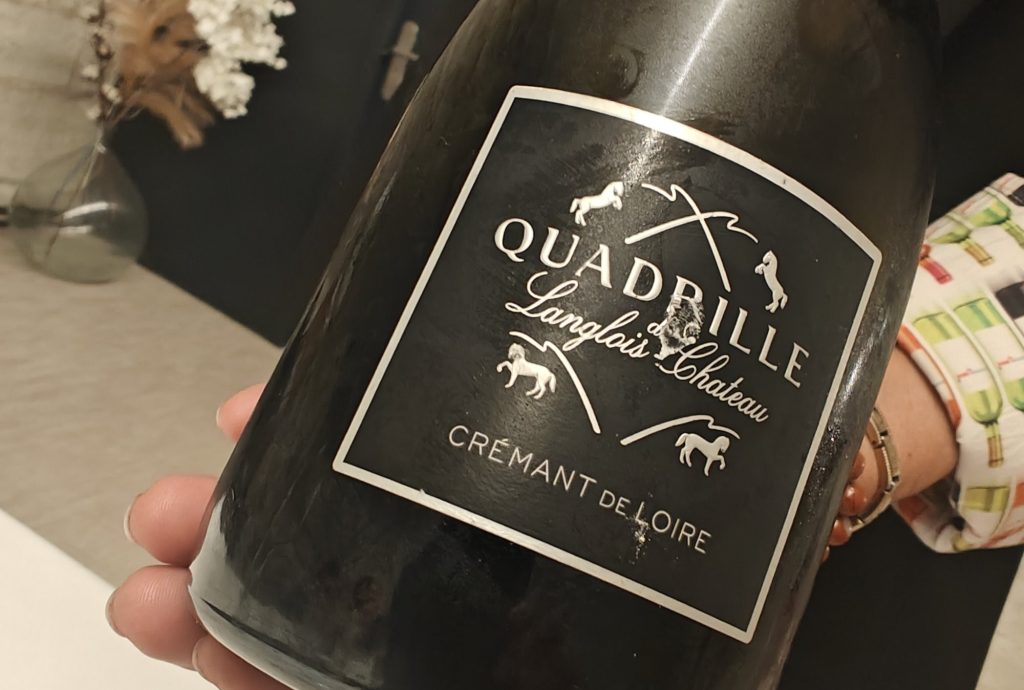
Yet, in a changing climate, pairings are being turned on their head; restaurant dishes have become lighter and brighter, but wines have become heavier. Natural acidity levels are falling. Traditional dishes have been transformed and modernized by what many contemporary French chefs call ‘French cuisine revisited.’ That said, ‘traditional terroir’ pairings continue to thrive across France alongside culinary innovation and the desire of sommeliers to experiment and adapt to consumer trends.
Harmony in pairings during meals traditionally progresses quality and body—meaning the weight and alcohol levels—throughout the meal.
– Light dishes and light young dry wine to weightier, main dishes paired with longer aged, more complex, mature medium and full-bodied wines. Subsequently, the pairing may shift to sweet or demi-sec wines and or, ending where proceedings started with a glass of Champagne or sparkling wine.
– A wine for each dish can, geographically and qualitatively, move on during a meal to encompass the renowned wine regions of the Loire, Bordeaux, Burgundy, Rhone, Alsace, the Languedoc, and beyond.
-Excessively powerful red wines are not necessarily preferred to the refinement of lesser-known wines better suited to contemporary eating habits.
A cool glass of sparkling wine to tantalize the palate is typically served as an aperitif. Brut or increasing zero dosage Champagne, Crémant, or indeed a Pet Nat sparkling wine is enjoyed with canapes; small bits like smoked salmon on Crème Fraiche or creamy cheese, Gougères or Burgundy cheese puffs with a Crémant de Bourgogne or Crémant de Loire.
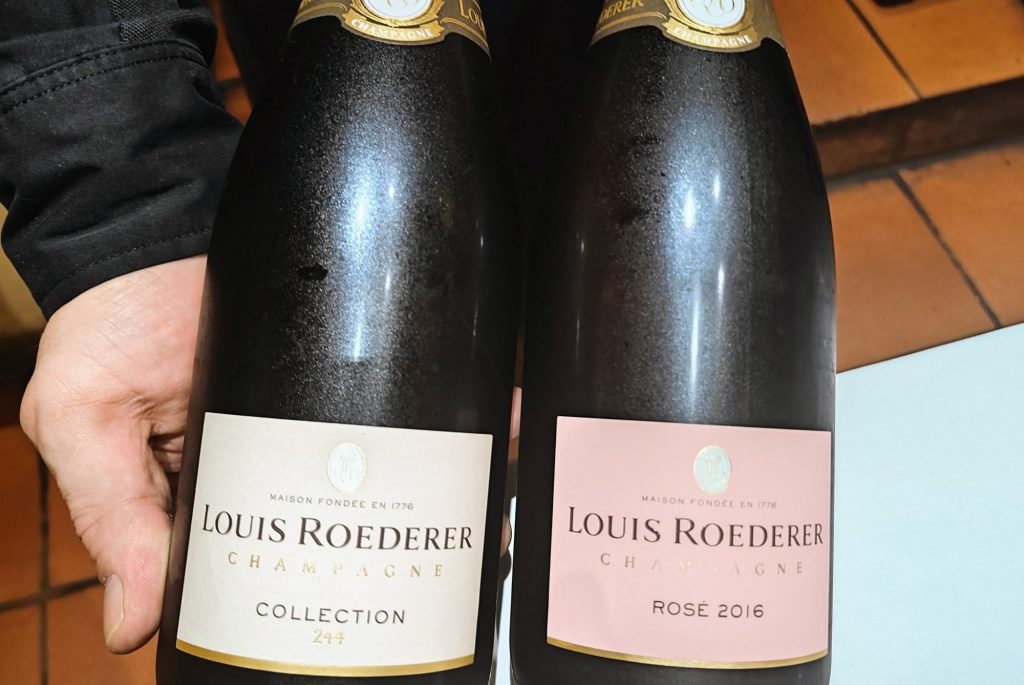
Champagne, of course, is produced in numerous styles and sweetness levels: Rosé, Blanc de Blancs (white grape Chardonnay only, often paired with seafood), Blanc de Noirs (white from red grapes Pinot Noir and Pinot Meunier, red fruits, usually savory food or desserts and chocolate if the style is demi-sec for instance), non-Vintage and aged complex richer Vintage, with weighty dishes.
Creating the first known blended Rosé Champagne Madame Veuve Cliquot in the 19th century inspired new pairings for Champagne. Building on this legacy and highlighting Champagne’s versatility in terms of production styles and pairings, Champagne house Krug released the book Krug Champagne at the Table: The Art of Pairing, a Culinary Journey in 2024, showcasing 30 recipes of contemporary dishes from chefs around the world that pair with Champagne.
Main producing wine regions: Champagne, Alsace (Crémant d’Alsace), Bordeaux (Crémant de Bordeaux), Burgundy (Crémant de Bourgogne), Languedoc (Crémant de Limoux), Loire Valley (Crémant de Loire), Rhone Valley (Crémant de Die), Savoie (Crémant de Savoie)
Wine production has recently been renewed in the cooler-climate peninsula of Brittany, France’s leading fish and seafood region. About 35,000 tonnes of oysters are plucked from the rocky coastline each year. Bright, young Breton Chardonnay, showing freshness and verve, such as Glaz blanc, Ar Hir Gwini, and Dantelezh, are now served in Michelin-star restaurants, meeting the demand for lighter wines that pair with Asian-influenced flavors.
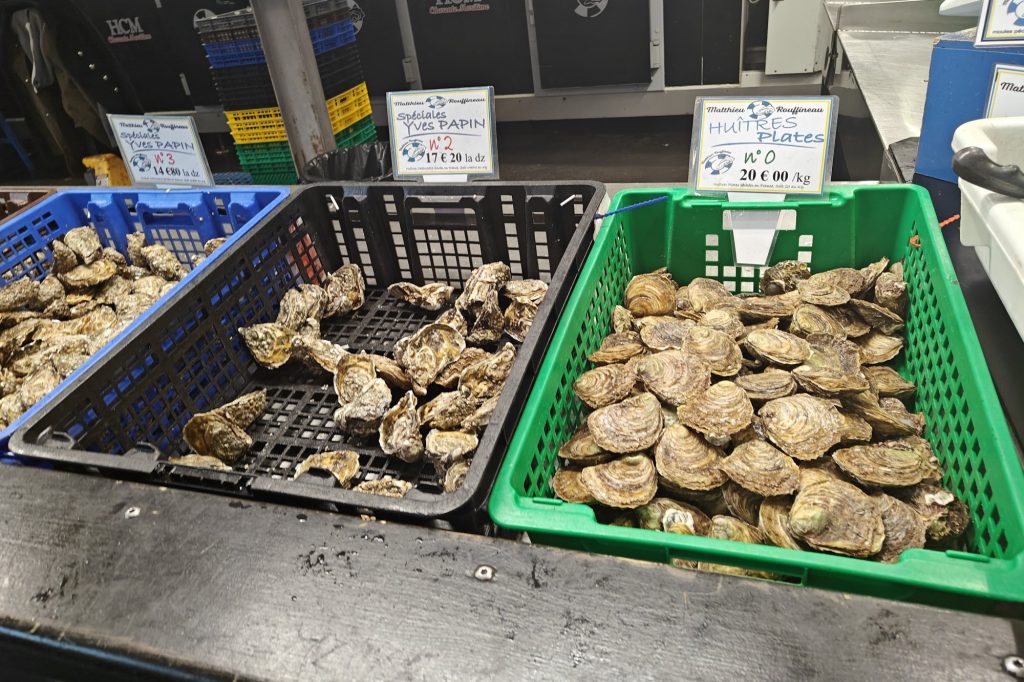
Local seafood platters of Langoustines, crab, shrimps, and winkles match the lemony-saline, often raciness of Muscadet, a wine that handles iodine and the salinity of Oysters. Moules Marinieres (of white wine sauce) is, of course, typically assured pairing. Weightier grilled white fish and Breton Blue Lobster, made with the traditional white wine sauce Beurre Blanc of the Breton Pays Nantais, are paired with more mature Cru Muscadet; its savory element a match for the miso in Chef Mory Sacko’s contemporary lobster starter, paired too with Sake; as with any dish France, together with matching the weight, texture and intensity of the dish, and ingredients, it’s the sauce or the jus, which determines the wine pairing.
Main producing wine regions: Alsace, Burgundy (Chablis, Mâconnais), Languedoc-Roussillon, Loire Valley (Muscadet Sèvre et Maine, Pouilly-Fumé, Reuilly, Sancerre, Vouvray ), Provence (Cassis, Côtes de Provence), Savoie, South West France (Côtes de Gascogne, Jurançon Sec)
The Loire Valley is home to the broadest range of contemporary French wine styles, often elegant and lighter, making them extremely versatile in terms of food pairing. For example, grassy, mineral Sancerre sipped with the creamy tanginess of Crottin de Chavignol is another prime example of local wine sipped with local food. Aromatic Sauvignon Blanc is known to go with green salads, tomatoes, and light, acidic cheese.
In recent years, however, Loire Chenin Blanc, despite rising alcohol levels, has become the most popular dry white wine in France, and it is increasingly made in low-intervention, natural forms. This apple-tangy wine cuts through the fatness of the famous local Rilletes de Tours. Traditionally, these are made with meat shredded, then preserved, and spread thickly on bread, but there are now increasingly Rilletes made with fish.
Off-dry Chenin Blanc, with its acidity and touch of sweetness, can pair well with spicy, Asian-influenced dishes. The weightier wines of Savennières, a top-end appellation, are often paired with creamy poultry dishes—just like Chardonnay from Burgundy. Blanquette de Veau, a traditional creamy veal stew served with Chardonnay, remains popular.
Historically paired with oysters, Chablis’s acidity levels in recent vintages, particularly Premier and Grand Cru Chablis with greater exposure to the sun, have dropped, and alcohol levels have risen, placing the wine into the medium-bodied range of white wines. In this context, Chablis pairs well with salmon and weightier fish dishes. Chablis has its own simple local dish: Jambon a la Chablisienne.
Other dishes feature oxidized Jura Vin Jaune. Reflecting changing habits, Oeufs en Meurette (poached eggs in Meurette sauce) is now increasingly made with white Burgundy or Crémant de Bourgogne sparkling wine. This shift in pairing styles was highlighted by the L’Oeuf en Meurette World Championships, a cooking competition held at Clos de Vougeot, the spiritual home of Burgundy wine. Since 1953, this Burgundian dish has been the signature offering served at every reception and wedding hosted there.
Dry Jurançon wine pairs wonderfully with the local foie gras or the alternative vegetarian version of Faux Gras in Southwest France, with the acidity of the wine cutting through the fat of the ingredients. As well Jurançon Sec, Canard A L’Orange (Duck a l’Orange), a typical French dish, can be paired with an off-dry Alsace Gewurztraminer or Riesling to meet the sweetness levels in the sauce.
Main producing wine regions: Alsace, Burgundy (Chablis, Mâconnais, Côte de Beaune, Côte Chalonnaise), Languedoc-Roussillon (Corbières, Limoux, Pic Saint Loup), Loire Valley (Vouvray, Savennières, Pouilly-Fumé, Reuilly), Provence (Cassis, Côtes de Provence), Savoie, South West France (Jurançon Sec, Côtes de Gascogne, Gaillac)
As it matures, Oak-aged Burgundy opens out to the earthy flavor of mushrooms and soils. A classic pairing is slow-cooked Coq au Vin; even better is the Poulet de Bresse, France’s finest chickens, reared under specific appellation rules. This exquisite poultry is often served with local Morel mushrooms or truffle-infused dishes or richer vegetarian oven-cooked dishes, highlighting the wine’s depth and complexity.
The richness of the classic Provence fish stew Bouillabaisse can be paired with the full-bodied weight of Rhone or Languedoc white wines, but that may vary according to revisited contemporary versions of the dish.
Main producing wine regions: Bordeaux (Pessac-Léognan, Graves, Sauternes), Burgundy (Chablis, Côte de Beaune, Meursault, Puligny-Montrachet, Chassagne-Montrachet), Languedoc-Roussillon (Pic Saint-Loup, Corbières, Limoux, La Clape), Provence (Cassis, Bandol), Rhone Valley (Condrieu, Châteauneuf-du-Pape, Crozes-Hermitage, Hermitage), Savoie
Increasingly popular and very versatile in terms of pairing, Orange wines, with their higher tannins than white wines, go well with spicy, savory flavors of Asian food, white meat dishes, tangy fish sauces, exceptionally well the weight and texture of spicy crab dishes with lime for instance.
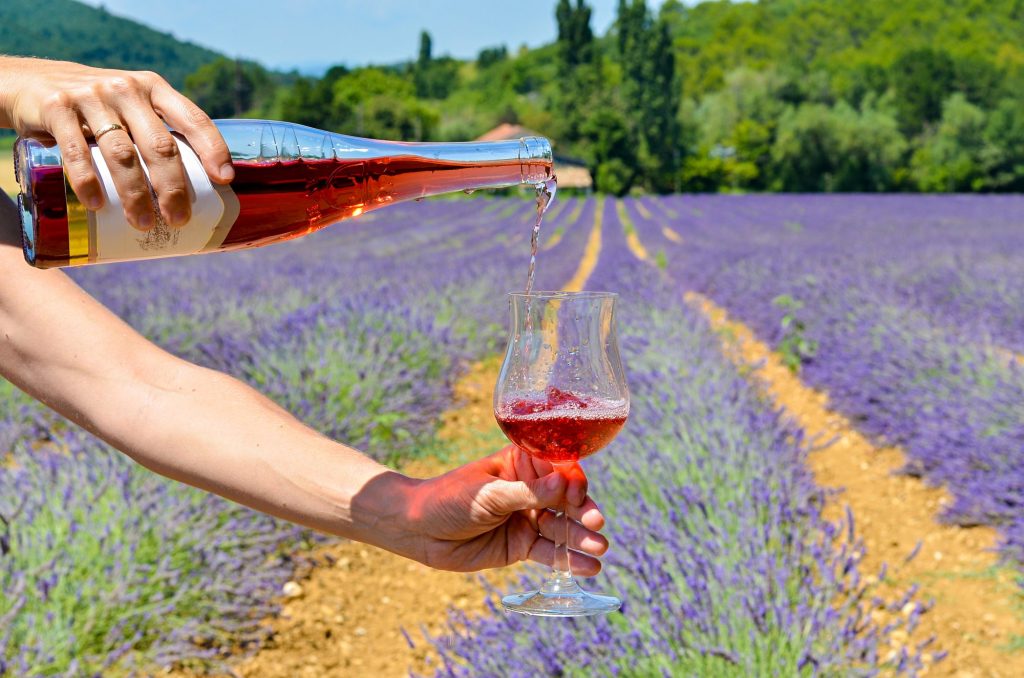
Provence Rose wines, also increasingly sought after, pair well with local salads like Salad Nicoise on a sunny day in the Mediterranean. In France, the color of the wine is often paired with the color of the food, such as orange wine with crab.
Pink (Rosé) Wines producing wine region: Bordeaux (Bordeaux AOC, Côtes de Bordeaux, Entre-deux-Mers), Provence (Côtes de Provence, Bandol, Cassis), Languedoc-Roussillon (Languedoc AOC, Corbières, Minervois), Loire Valley (Anjou, Saumur, Touraine), Rhône Valley (Tavel)
Orange Wines producing regions: Alsace, Jura, Languedoc-Roussillon, Provence
Light-bodied Cabernet Franc and Pinot Noir, with low tannins from the Loire, pair well with local Loire dishes like Charcuterie, local fish, Rillettes, Charcuterie, and fresh Mushrooms and foods using fresh local herbs.
Likewise, Pinot Noir from Alsace can be lighter with higher acidity than Pinot Noir from Burgundy. Richard Rottiers, a winemaker of a modern, low-intervention, organic Beaujolais winery in the reenergized Moulin-A-Vent appellation, likes to pair his bright, soft tannins wines with Charcuterie and Pâté en Croûte, a delicacy featuring a savory mix of meats seasoned encased in a golden, flaky pastry crust.
If the sauce is nearly red—for instance, one made from the shell and innards of a lobster—a Pinot Noir or an orange wine would make an astute pairing.
Main producing wine regions: Alsace, Beaujolais, Burgundy (Côte de Beaune, Côte de Nuits, Bourgogne Rouge), Loire Valley (Saumur, Chinon, Bourgueil, Sancerre), Languedoc-Roussillon (Languedoc AOC, Minervois, Corbières, Pic Saint-Loup), Provence (Côtes de Provence, Bandol), South West France (Cahors, Irouléguy, Côtes de Gascogne)
On the southern reaches of Beaujolais, Cote de Brouilly, one of the top Beaulojais cru appellations, old vines on volcanic Mount Brouilly produce more complex, full-bodied velvet-like reds such as Julian Duport’s La Boucherette, a fine-structured wine to cut through the fat of smoky grilled red meat, including streaks. Wines like this aged in bigger vats show less oak impact while providing layers and depth for aging. The wine’s weight, richness, and tannins match the fatness of red meat.
Silky, elegant Pinot Noir also pairs well with roast beef, soft filet steak pork or veal dishes, and duck, often made with sufficient acidity to cut through the fleshy fatness of meat. Of the wide range of local Burgundy dishes, aged, savory, and earthy, Burgundy red, preferably Premier or Grand Cru, is traditionally paired with the slow-cooked, rich beef casserole dish, Boeuf Bourguignon. With its rich combination of vegetables, garlic, and herbs, Ratatouille of Southern France is often paired with robust local Languedoc reds.
Main producing wine regions: Beaujolais, Bordeaux (Saint-Émilion, Pomerol, Médoc, Graves), Languedoc-Roussillon (Minervois, Corbières, Saint-Chinian), Loire Valley (Chinon, Bourgueil, Saumur-Champigny), Provence (Côtes de Provence, Bandol), Rhone Valley (Châteauneuf-du-Pape, Gigondas, Crozes-Hermitage, Vacqueyras), South West France (Madiran, Cahors, Irouléguy)
A quintessential local terroir pairing is Agneau de Pauillac, Paulliac lamb served with red Bordeaux from Pauillac, a left bank Bordeaux appellation where Cabernet Sauvignon dominates blends at the appellations renowned producers like Chateau Latour, Lafite Rothschild and Mouton Rothschild.
Reared under their own protected appellation status, Pauillac Lambs are born and raised beside their mothers and kept with their mothers for 60 days on the salt marshes around Pauillac. They are often served with truffles or mushrooms cooked in chicken stock. It can also be served as a stew with white beans, herbs & vegetables called Mijote d’agneau aux mojettes. Full-bodied reds pair beautifully with roasted meats, such as mature Merlot-dominant Bordeaux wines from Pomerol or Saint-Émilion. Rib-eye steak also pairs excellently with the bold reds of the Rhône and Southern France, particularly those from Languedoc.
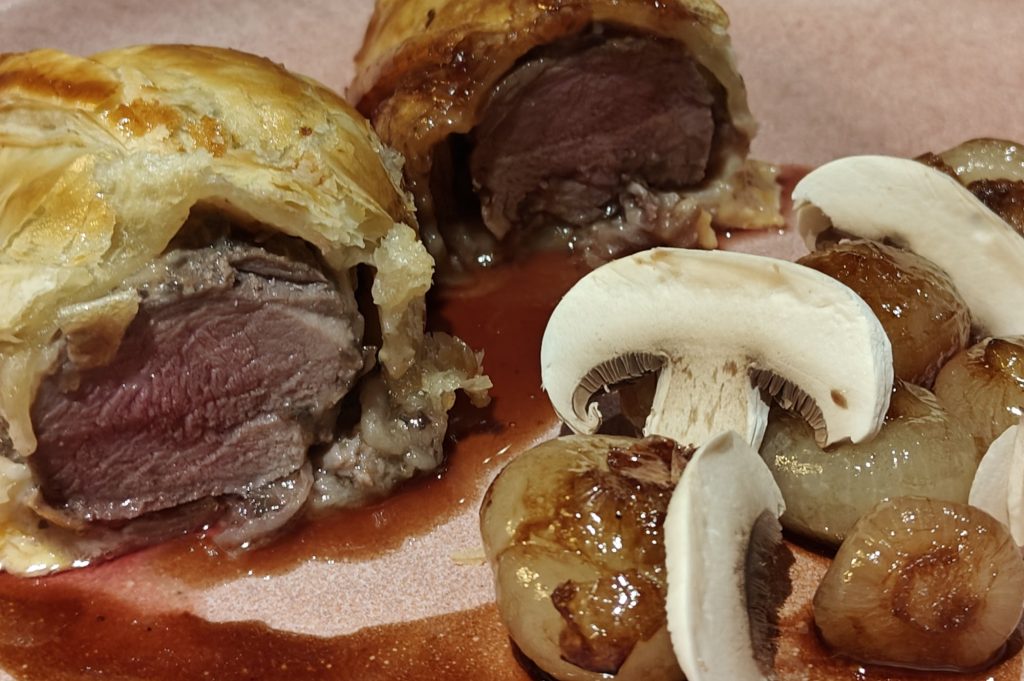
With their robust flavors, tannic structure, and layered complexity enhanced by barrel aging, these wines superbly complement roasted red meats. In The Wine Dine Dictionary, author Victoria Moore suggests that the strength of the tarragon flavor in Bearnaise sauce with streak pairs best with the herbal scent of maturing wines from the southern Rhone. A more local pairing would be with the bold Madiran or Irouleguy reds made in the Basque hills, both made from the grape variety Tannat.
Main producing wine regions: Bordeaux (Graves, Médoc, Pauillac, Pomerol, Saint-Émilion ), Burgundy (Beaune, Côte de Nuits, Gevrey-Chambertin, Nuits-Saint-Georges), Languedoc-Roussillon (Corbières, Minervois, Saint-Chinian), Rhône Valley (Châteauneuf-du-Pape, Côte Rôtie, Gigondas, Hermitage), Provence (Bandol), Southwest France ( Cahors, Irouléguy, Madiran)
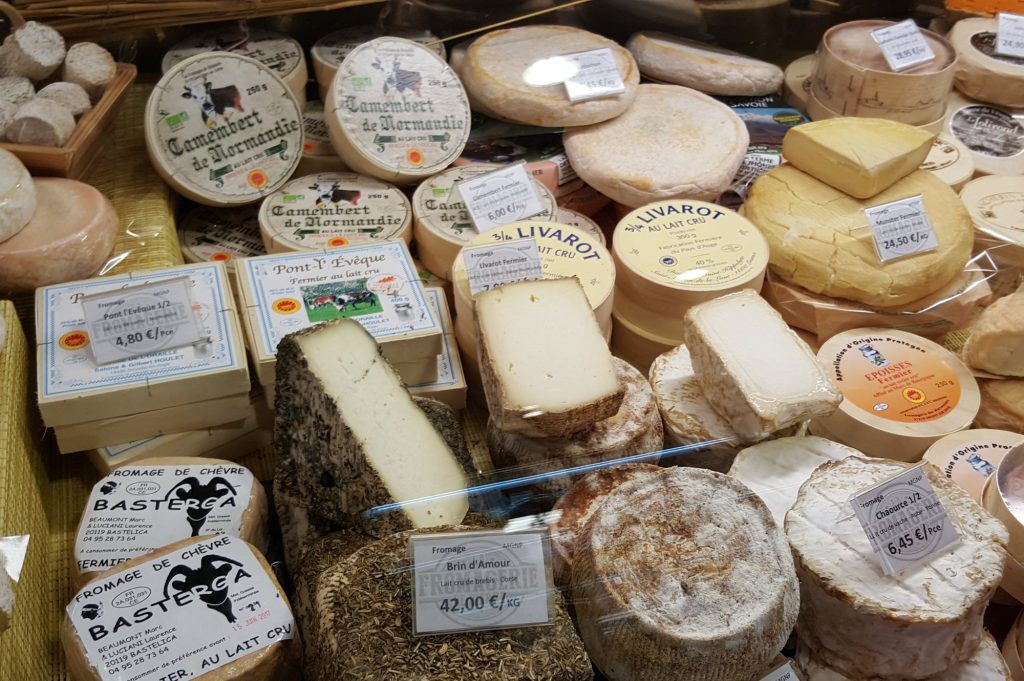
France is typically a land of cheeses; like its wine, their provenance and quality are protected by appellations. The parliament of Toulouse provided special protection for Roquefort as early as 1666. In the case of Epoisses, a Burgundy cheese, protection extends to protect even the senses; a cheese so stinky that it is banned from being transported on public transport in France.
Invariably, French cheese is paired with white wines, and this can depend on how it was ripened, aged, and refined. Young fresh goat’s cheese can go with young acidic whites. A complex, mature Champagne or white Burgundy or Vin Jaune of the Jura pairs well with aged and refined Cheeses. Classic local pairings include Alsace Munster cheese with Gewurztraminer, Basque sheep’s milk cheese Ossau-Iraty with a sweet Jurançon white wine and Sauternes with the blue cheese Roquefort.
In France, sweet wines are generally left until the end of the meal and paired with sweet dishes, other than with certain cheeses. However, the richness and acidity of Sauternes are known to pair well with asparagus.
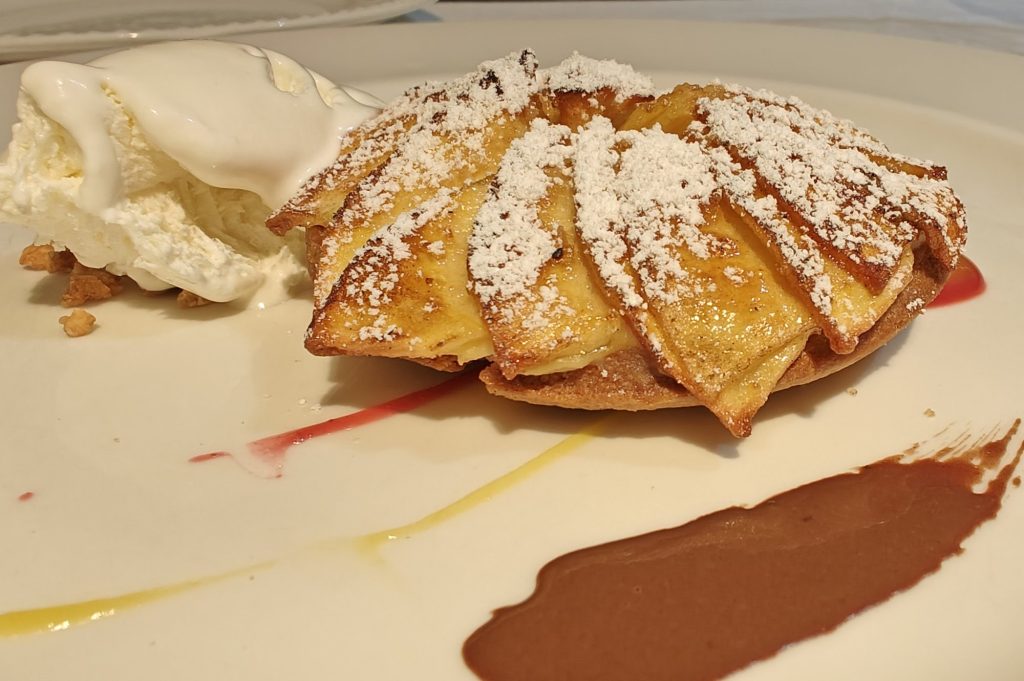
For example, mature Sauternes match Asian flavors and tropical fruit in desserts. Sweet wines from Quart de Chaumes, the only Grand Cru appellation of the Loire Valley, classically pair with Tarte Tatin. Sauternes can pair with chocolate tart with forest fruits; dark chocolate pairs with red wine, sweet amber, or red Bunyuls; for instance, but for milk chocolate, try a floral Gewurztraminer. The red fruits of demi-sec Rose Champagne are perfect for dark chocolate and demi-sec Champagne with white or milk chocolate.
Main producing wine regions: Alsace, Bordeaux (Sauternes, Barsac, Loupiac, Sainte-Croix-du-Mont), Jura (Côtes du Jura, Château-Chalon), Languedoc-Roussillon (Rivesaltes, Banyuls, Maury, Muscat de Frontignan), Loire Valley (Coteaux du Layon, Quarts de Chaume, Bonnezeaux, Vouvray), Provence (Palette AOC), Southwest France (Jurançon, Monbazillac, Pacherenc du Vic-Bilh)
White and Rosé wine: Between 5 and 7 degrees centigrade for sweet and sparkling wines, between 7 and 10 degrees for lively and fruity wines, and between 10 and 12 degrees for rich-bodied and vintage sparkling wines.
Red wine: Serve light and fruity reds, as well as orange wines, at 12–14°C; rich and full-bodied reds at 14–16°C; and tannic wines at 16–18°C.
Wine and food enjoyed together socially at the table are extolled in France as a virtuous, civilized way of life. Notions of French gastronomy and pairings were first epitomized in Jean Anthelme Brillat-Savarin’s Physiologie du goût (The Physiology of Taste) of 1825. Since then, and renowned for its rich gastronomic heritage, France has been instrumental in providing guarantees over the quality and provenance of local wine and food through appellation rules.
French savoir-faire cooking techniques in the kitchen have evolved to incorporate flavor and texture combinations and aesthetics in presentation from other cultures, such as Japan.
“Whether styles of wine have been made to suit local dishes or vice versa, they’ve naturally grown into each other; at the same time sommeliers in France are very open to new trends to adequate pairings with new versions of dishes. For instance, orange wine, sake tea infusions, Sake, beer, and cider, used in pairings have all gained their stripes in pairings,”
says David Ridgway, the veteran former head sommelier at the renowned Tour D’Argent restaurant, adding that “pairings should not be over-intellectualised, but rather enjoyed for the immense pleasure they bring.”
Together with my own experiences and knowledge, here are some references:
If you would like us to customize an exclusive luxury tour, contact us and let us know your travel plans. We offer luxury food and wine tours for private groups of a mininium two guests. In addition, all of our private, chauffeured tours are available year-round upon request.

